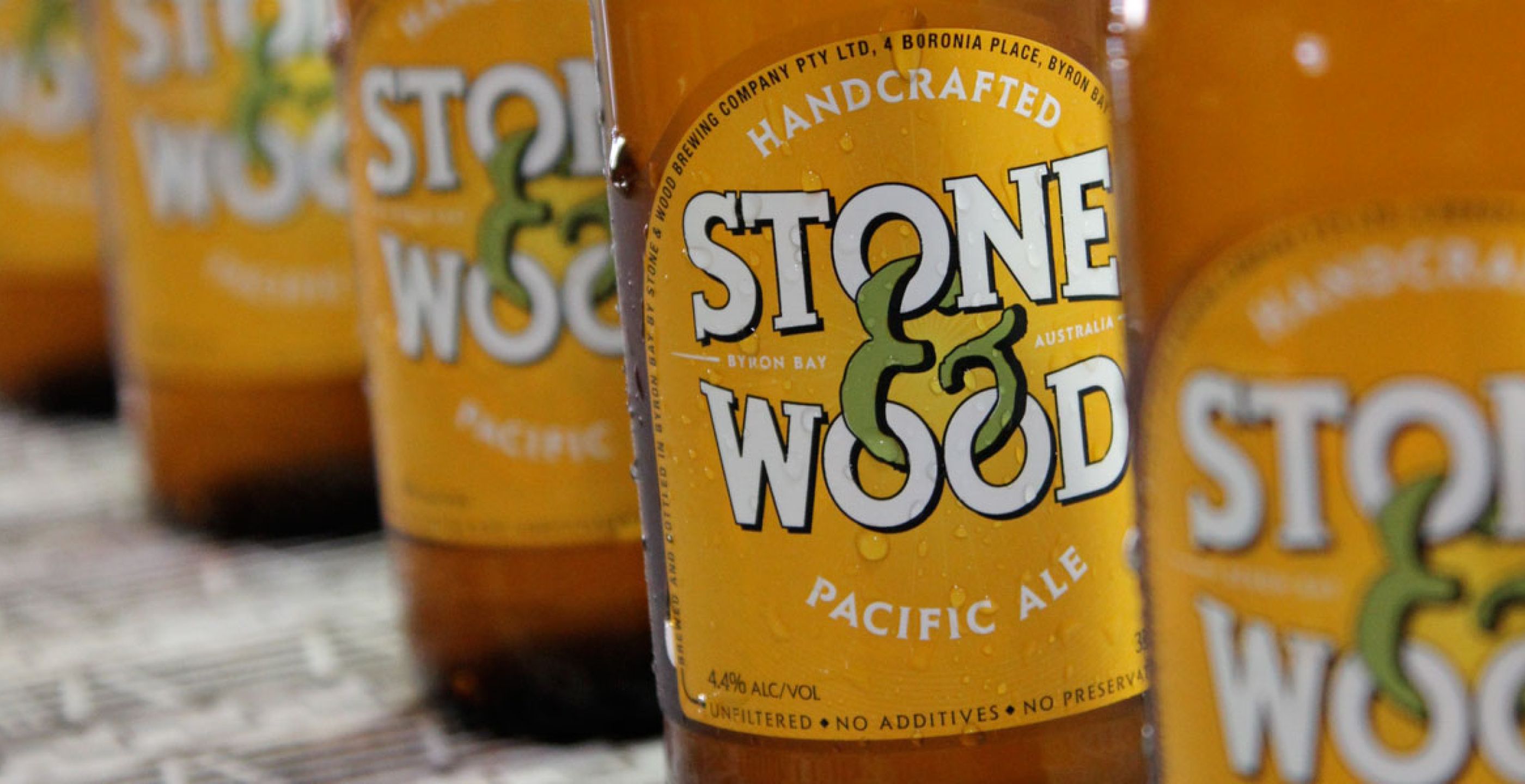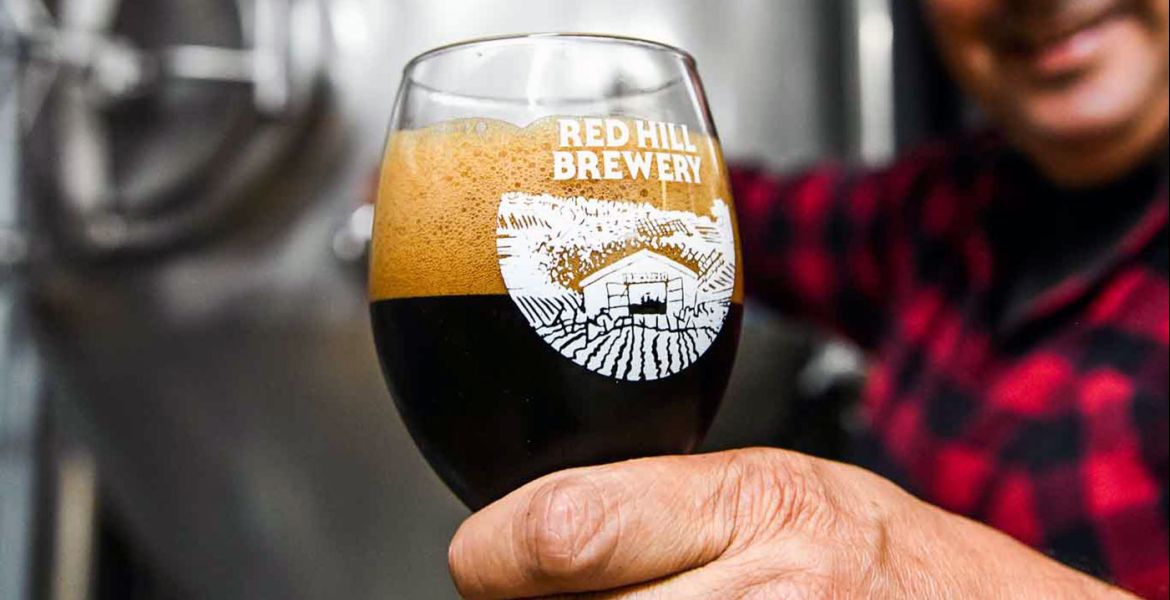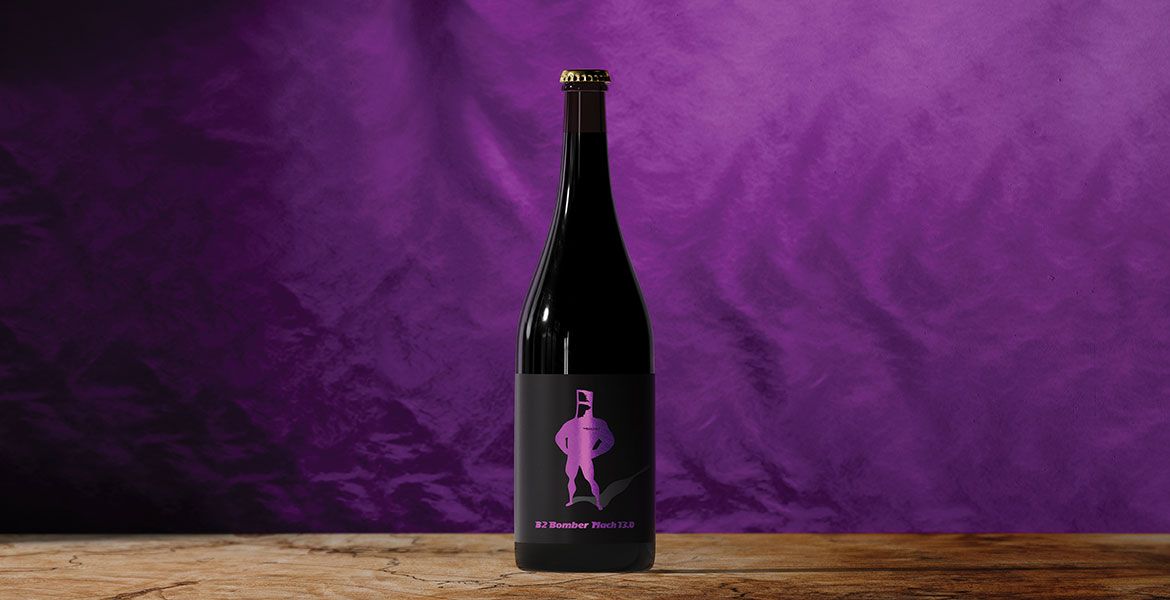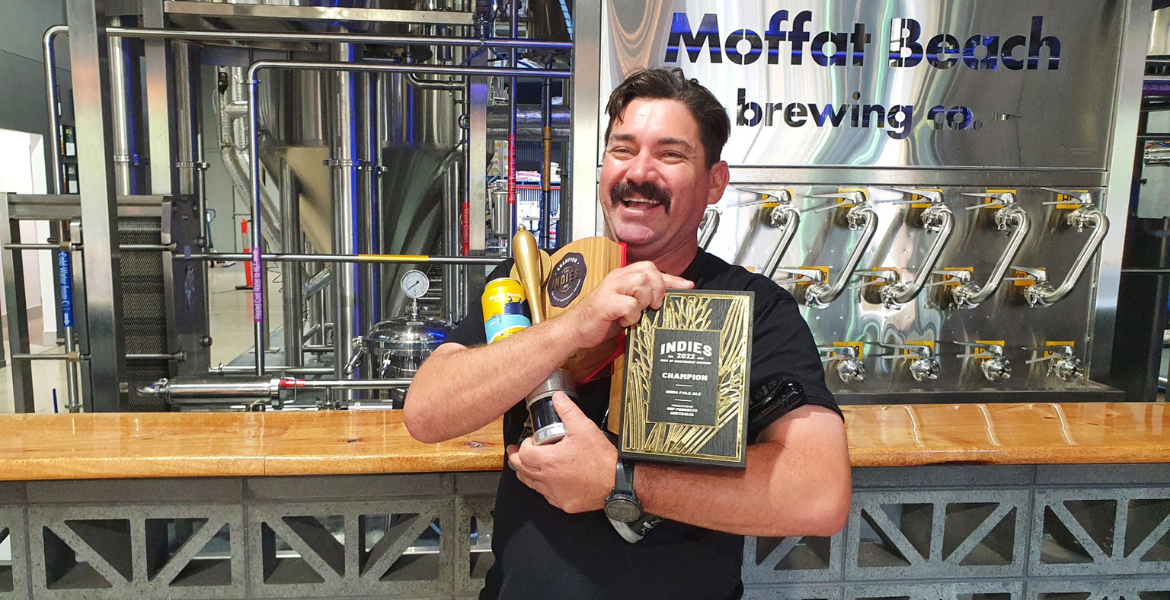It's the middle of 2007 and three mates are gathered in the kitchen of a house in the Melbourne suburb of Surrey Hills. They're surrounded by 45 different bottles of beers. It's a motley lineup, one that stretches from Czech pilsners to Sierra Nevada Celebration Ale, from Mountain Goat Hightail to Pure Blonde and Melbourne Bitter.
The intention isn't to reach the end, take a family shot and brag about their exploits on a Facebook beer group (well, it is 2007, after all). Instead, one by one and through the dozens, the trio samples each beer, making notes, figuring out what they like and what they don’t.
It sounds like fun, and it would have been, but it was more than that. They were searching for something. These three already knew beer, but they wanted to make a new beer.
They didn't yet have a brewery in which to brew this beer and wouldn't lock in a location for it until the end of that year. But they did have a name: Stone & Wood.

The Monster Awakes
Fast forward to summer 2011. That same trio of mates – Jamie Cook, Ross Jurisich and Brad Rogers – is sat in the small office space at one end of their brewery in Byron Bay. Their beer, the one they'd settled on that night four years earlier, had taken on a life of its own and was testing them.
"There was a pile of purchase orders for Pacific Ale that we couldn't jump over," Ross says. "We didn't have remotely enough beer."
"That's when it went nuts," Jamie recalls. "Holy shit! This is big."
Three years on from pouring the first pints of what was then called Draught Ale at The Rails and Great Northern pubs in Byron Bay, they realised they had a monster on their hands. It was quite the turnaround.
"In the early days we didn't rely on the customer to place an order," Ross says. "I would call every customer that we had and take their order. At the end of those days, I couldn't wait for the time when the phone would ring and someone would ask for the beer."
But now they knew every bottle was sold before it was filled.
"We have a weekly meeting in the business where the production and sales guys try to match supply with demand," Brad says. "During that summer the meeting got given the title of 'loaves and fishes', a name it still has today, as that pretty much captured the miracle like task we faced every week of trying to work out how we we would meet such a huge demand with such little beer.
"We were allocating beer by geography, by customer type and even down to customer. On top of this, we had to get very good at designing and ordering equipment at the same time as installing and commissioning gear that already arrived and, of course, also running the gear we had as hard as we could."
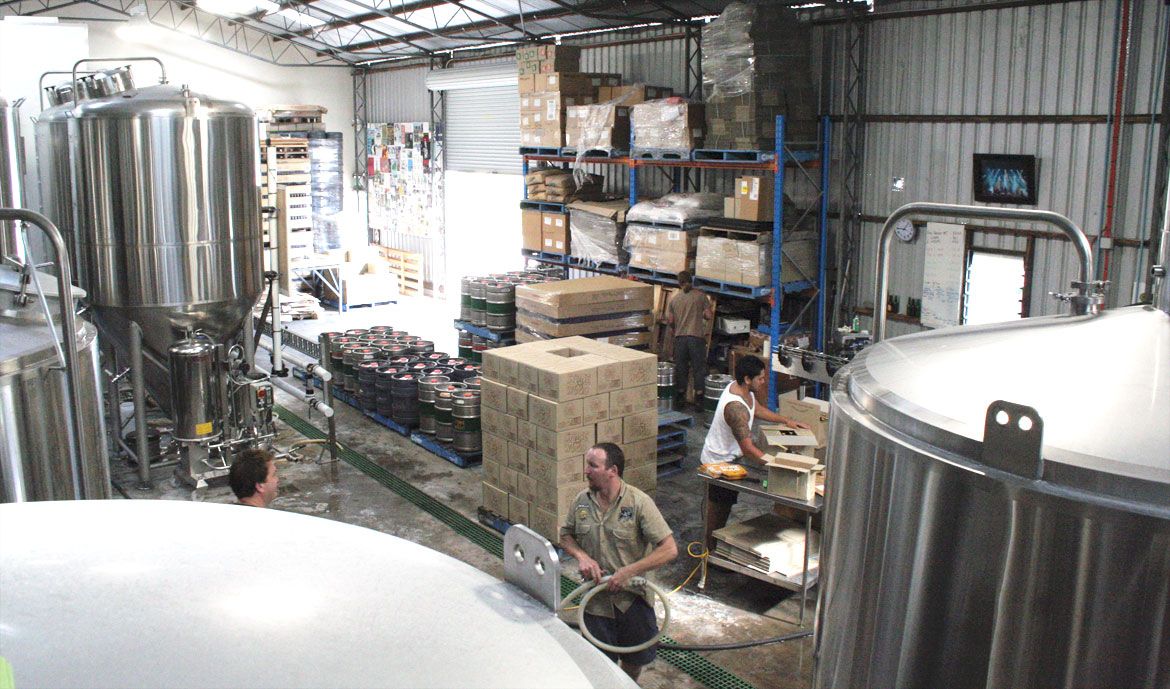
Having accepted they couldn't meet demand, they discussed contracting out production but the option was quickly dismissed as not being in their DNA. So, while they concentrated on ramping up their own production, they began telling customers, including major retailers, to do something they don’t like to do: wait.
It was during this period I experienced a moment that highlighted just what a phenomenon Pacific Ale was becoming.
While picking up some beers for a blind tasting at the local Dan Murphy's, I overheard a white-haired Italian man in his 70s asking a staff member why there was no Pacific Ale in stock. The Dan's employee explained very politely that Stone & Wood was a small brewery and was unable to meet demand at this time. The septuagenarian was distraught, wandered off to pick up a couple of bottles of white, and headed to the checkout.
Not wanting leave things as they were – it felt like a loss for the nascent craft beer scene, despite the staff member's best efforts – I wandered over and offered to suggest some alternative beers he could try.
"That beer has ruined me," he told me. "Ever since I first tried it, I've been unable to drink anything else."
* * *
It was a situation that took some management and led Ross down a sales path he'd not previously travelled in his career to date.
"We had a very small sales team and I remember thinking to myself, 'We need to take a different approach.' I have to train them in the sales pitch of humility – in not being able to supply," he says.
"Instead of selling beer, saying, 'We really appreciate you wanting to buy our beer but we don't have enough production capacity to guarantee I’ll have beer for you next week.'
"It's tough not to offend the customer or to come across like your head is up your arse."
Guardians Of The Galaxy
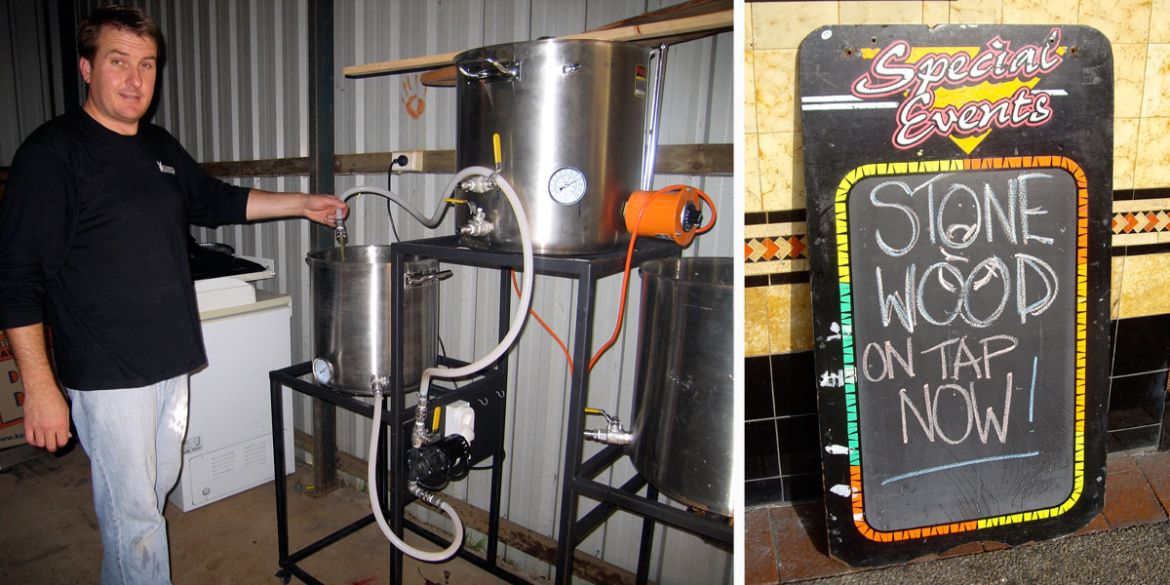
A kitchen in Surrey Hills is a long way from the beaches of Byron Bay, literally and figuratively. Yet, that's what was in mind as Jamie, Ross and Brad worked their way through the 45 beers.
It was a step in a process that had started the year before as they started weighing up a life outside CUB. Within the business they were imagining, they wanted to come up with a simple portfolio – an ale and a lager – and steer clear of what most craft brewers were doing at the time: pale ale, amber ale, golden ale, stout, porter.
The end goal was to "work out what the key elements of a beer would be that could encapsulate the classic drinking occasion in Byron – out of the surf into the pub – and that finds a sweet spot where a beer is both approachable and distinctive."
Says Brad: "A range of beer styles was selected, and we went through them one by one in a logical, sequential order, breaking every beer down by its key elements. We captured the good and, importantly, the bad from each beer: what made it distinctive and what made it drinkable. We rated each of them on a long piece of cardboard where we had drawn a ‘drinkability meter’.
"We talked late into the night about what each beer had that contributed to them being close to the sweet spot on the meter.
"From this process, we had the elements of the beer we wanted to create. From there, I picked up the task of working on a small homebrew kit in my shed in the Byron hinterland to build a beer based on those elements."
Enter Galaxy, a new hop variety that had been developed by Hop Products Australia.
"So many things in the Stone & Wood journey have been about good luck and timing," Ross says. "Finding the site. The price of stainless steel when we first ordered from DME. Securing financing just before the GFC.
"As luck would have it, there was also this hop called Galaxy that our mates were developing."
"I’d come across Galaxy through some playing around with other brewing projects and thought it could be the centrepoint of the beer," Brad says. "It was so flavoursome, intriguing and different, and, let's face it, perfect for this beer in this region.
"Not many people had used it. Where it was being used was typically on the hot side [of the brewing process] due to its high alpha content and, whilst the aromatics of the hop were of tropical fruits, the bitterness derived from adding too much of it on the hot side tended to create an aggressive hop character.
"Used lightly on the hot side to delicately balance a raw but full malt bill was a nice fit for our beer. But using it on the cold side and dry hopping it at the right time really showcased that amazing aromatic quality. The trick was in getting the balance right between the palate weight and profile that was full enough to counter the hop flavours, dry enough to provide refreshment and clean enough to finish in a way where the drinker was already looking for another one."
"I honestly don't think we could have done it with another hop," Ross says. "The beauty of Brad was drawing that flavour out of that hop.
"I've had plenty of Galaxy beers that taste like shit. It's so potent and some people use too much."
Selling The Beach Life
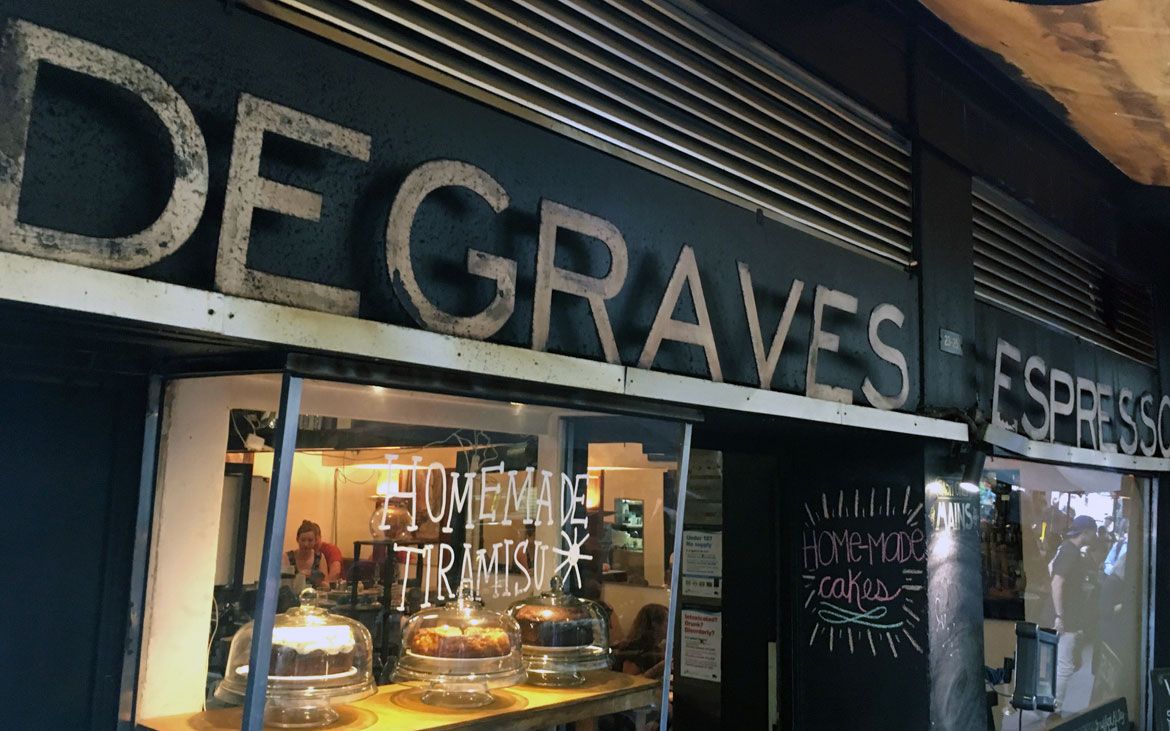
Given the ubiquitous nature of beers brewed with Galaxy or hops with similar tropical and citrus characters, not to mention the runaway success of Stone & Wood itself, it's easy to forget that this was a brewery and beer that had to start out from scratch just like all others.
What's more, there will be plenty of keen observers of the local beer world who know that the three founders met while working at CUB. Thus, there's likely an assumption they left their previous roles with a flat pack plan ready to go from the off. And, given they're now producing more than ten million litres across their various brands every year – as much as the next few independent brewing companies combined, Coopers excluded, produce of their own brand beers now Mountain Goat, 4 Pines, Feral and Pirate Life have been acquired by larger entities – it's easy to imagine it's always been a polished machine.
Yet in their first year of operation they sold 40,000 litres of beer – the same volume you'll find in just one of the larger tanks at the main production brewery in Murwillumbah today.
"We were just three blokes who had industry experience who put our houses on the line," Jamie says. "We rolled up our sleeves and got into it. We did things on the bones of our arse – whatever it took.
"All the money went into the quality of the brewing kit; anything else had to scrape by and it was like that for the first three years."
The reality was made apparent on my first visit to the brewery in late 2010, back when Scotty Hargrave, now head brewer at Balter, was still brewing alongside Brad and Pacific Ale was still being sold as Draught Ale.
On the one hand, you had a system for rinsing bottles as they came off the packaging line that featured a length of hose with a series of small puncture holes in it stretching from a tap in the brewery wall and held over the end of the line with, if I recall correctly, bits of string, or maybe cable ties. And you had the school camp like accommodation upstairs where staff or guests might crash at the end of a long day – a ragtag collection of rooms filled with old beds, its centrepiece the Cryer Malt Suite, named after the NZ based malt supplier, whose founder David Cryer was a regular visitor.
Then you had the attitude that meant that, when I crawled out of bed at 7am after drinking Draught Ale from the bright tank while listening to The Flaming Lips with Brad in the brewery until 1.30am, I found he'd already been brewing for two hours (and had bacon and egg rolls on the go in the kitchen).
Yet even reaching that point had taken serious effort.
"It took some salesmanship," Ross recalls. "[At first] we didn't have it in bottles so what Brad would do was bottle some from kegs into tallies. I'd put them on ice and off I'd go.
"Or we'd take it in a ten litre keg. I'd go to venues and could only do two calls before the beer would be flat. But I had a 100 percent success rate.
"Walk into a bar with a ten litre mini-keg on ice. Throw it onto the bar. Pump beer into some pot glasses after I'd done my spiel. They were blown away by the effort that we had gone to to provide them a beer.
"It was through sheer resourcefulness in needing to sell something. It was all I could do."
What's In A Name?
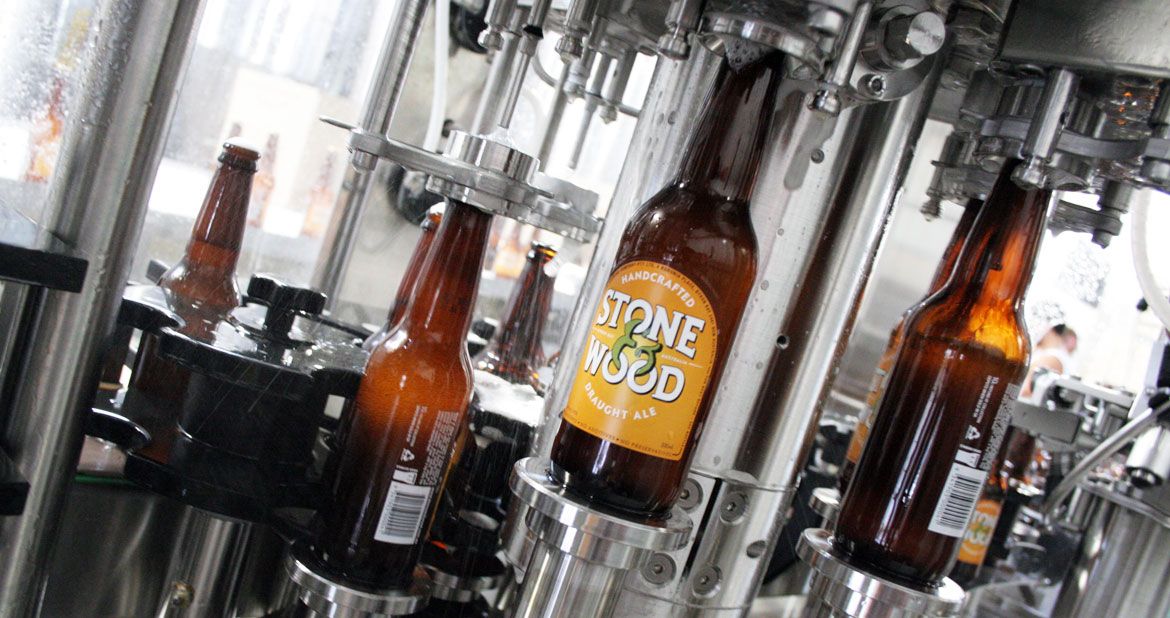
What's now known as Pacific Ale was the first Stone & Wood beer, making its debut at those Byron Bay pubs on November 28, 2008, as Draught Ale. The idea was for it to be a beer for their backyard – not that this parochial focus was a sign of a lack of ambition.
Jamie had been working with the Australian Bureau of Statistics while researching a site for the brewery – they considered a stretch from Noosa in the north to Ballina in the south. He'd worked out that, by 2020, 20 percent of the country's population was likely to be living in that corridor. What's more, while the wider Shire around Byron Bay is only home to 35,000 residents, the town receives 1.9 million visitors each year.
"We could be introducing our beer to new people each weekend," he says. "And everything tastes better when you're on holiday."
Still, for all that forward-thinking, the beer was intended as one that would only be available on tap. Once they could afford a bottling line, they'd package the Pale Lager "to capture the relatively conservative drinkers who visited the town" but the ale would be put into the local market before slowly being rolled out to Brisbane, Melbourne and Sydney.
"We thought Draught Ale would be a good beer for our local market, but would be a slower burn than the lager," Brad says. "Between the two beers we were hoping to slowly build our business over five years or so to get it to a sustainable volume where the three of us could at least put food on the table for our families and we would have a healthy business we could be proud of."
But once it started spreading further afield, a buzz started to build. Then came a suggestion from people who knew a thing or two about taking the country by storm with a beer.
Realising they were severely undercapitalised, the founders had sold a minority share in the business to Little World Beverages, the business behind Little Creatures and White Rabbit.
"The real impetus to put it in a bottle was in a board meeting when Little Creatures was a shareholder," Ross says. "Nic [Trimboli] and Howard [Cearns] said, 'You've got to put it into a bottle.' The funny thing is I wanted to as well. But it was called Draught Ale..."
Initially, bottles went out under the Draught Ale name. While it was a misnomer, the feeling was that it was better for the marketplace to understand it was the same beer they'd enjoyed on tap then change the name later. As for when the change came...
"We were just bouncing around names," Ross recalls. "We came up with it in half an hour. We are as close to the Pacific as you can get.
"We chose it because it didn't fit into any particular style; it couldn't be a pale or an IPA. And that's the approach we have taken from day one. We had come from a business that had made the simple things in life so over-complicated. To this day, Stone & Wood is about simplicity and enjoying easy-drinking beers."
Of course, it hasn't always been simple in terms of the name, given the years-long court battle with Thunder Road Brewing over use of the name Pacific Ale.
"It was just a frustrating process given there was clear space in the market when we set up the brand and applied for the trademark," Brad says.
"The positive side of the story was that almost all of the brewers in the country respected what we had created and steered clear of our brand. Sure, there are a lot of summer ales and tropical ales around now ... and a couple of other Pacific ales, but we have faith in the brand we have built and have really turned the page on the whole thing.
"Stone & Wood Pacific Ale will always being the originator of what the industry now calls summer or tropical ales."

The Before Time
Jamie, Ross and Brad weren't ingenus when they launched Stone & Wood. The three had met at CUB and ended up working closely together for years. During that time, they played a role in driving craft beer from within the belly of the beast and, in the case of Jamie – the most experienced of the three – there's a relationship with craft, or "specialty" beer that goes back further still.
He'd been working bar jobs in London back in the 80s before taking on a role with Bass Charrington at a training school for managers who came to learn how to run a pub – cellar management, handling real ale and so on.
"That's where I got the beer bug," he says.
"The other thing that piqued my interest back then was the Fox and Firkin breweries. Being able to walk into a pub in London and look through the glass floor – that was one of those, 'Oh shit!' moments for me."
Upon first returning to Australia, he worked for XXXX before being enticed west by the team at Matilda Bay, by then causing some serious disruption to the established order in the local beer scene. He was hired to run the draught beer side of the business, working for Matilda Bay from 1989 until 1997, thus both before and after its acquisition by Foster's. While there, he was involved in reopening the brewery at the Sail & Anchor, which had been shuttered after the original Matilda Bay production facility opened.
Ultimately, after a period spent running the draught beer business for CUB then moving into marketing, he engineered a move back to Brisbane after his father fell ill. And it was soon afterwards that both Ross and Brad would appear in his orbit.
Former winemaker Brad had started out within the CUB empire at the long-gone Kent Brewery in Sydney before moving to Fiji to brew Fiji Gold and make Bounty Rum. It was there he collected the rocks that would help create Stone & Wood's Stone Brews before moving again to the Gold Coast Brewery in Sanctuary Cove.
"We were winning trophies back then," he recalls. "So Jamie was asked to come down from Brisbane to meet this guy at Sanctuary Cove and put together a strategy for craft beer."
"Brad sort of ended up running that brewery," Jamie says. "They only had that brewery because some of the execs had houses at Sanctuary Cove.
"Then people worked out they had this brewery here and I was back from WA 'and he knows a bit about specialty beer' – so they put us together."
They set about rebranding the operation. Cane Toad "wasn't really cutting it", according to Jamie, and the brewery's brand was reborn as Masthead.
"We put Alpha Pale Ale in the portfolio along with Beez Neez and Bohemian Pils," Jamie says. "They were all out of Gold Coast."
Then came the last big move before Byron Bay.
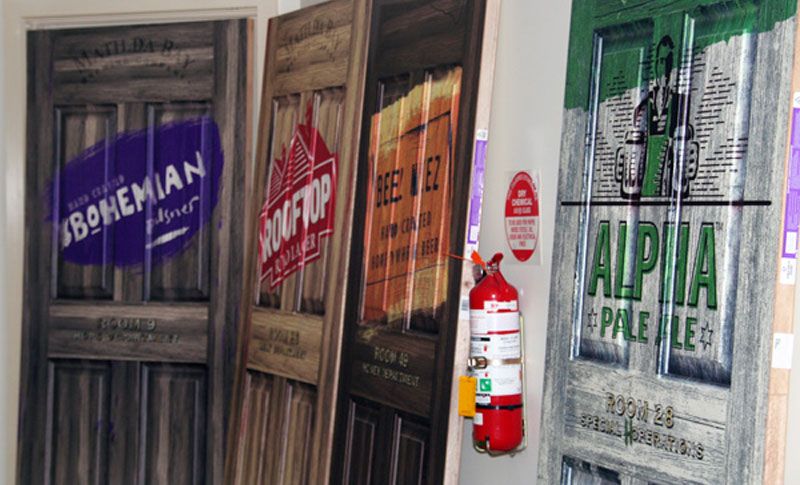
"The gravitational forces at CUB mean that if you’re in a senior role you end up moving to Melbourne," he says. "There's still fingerprint marks in the runway in Brisbane."
Jamie was put into a national marketing role, Brad went to Sydney for a few months to work at a distillery, Masthead went into limbo. And, by this point, Ross was increasingly part of the picture.
"I knew Jamie from my first year [at CUB]," he recalls. "We first met at a sales conference in Stanthorpe. I worked very closely with him for nine years. He was effectively my boss."
At the same time, the rise of specialty beer had caught the eye of the company's CEO: James Squire was on a roll and Little Creatures was taking off.
"He came to us and said, 'You're the only one in the business who knows what to do.'," Jamie says. "We produced a strategy for Matilda Bay that involved rolling in the Masthead brands. I recruited Brad as head brewer and Rosco as the sales guy.
"We worked on improving Redback and things like Dogbolter. We were looking at putting the Sanctuary Cove brewery somewhere and were within 30 seconds of signing a lease on the property in Healesville where White Rabbit ended up but they kept jacking up the lease."
Without a home and with growing demand for their beers, they started getting Beez Neez, a honey wheat ale, brewed at The Garage in Dandenong, then the home of Stockade Brewing Co (not the one now operating in Sydney under the Tribe Breweries umbrella).
"It was a separate business that was doing spirits like Cock-Sucking Cowboys and all sorts of weird shit," Jamie says. "Beez Neez ended up as the bulk of their volume.
"We told them we were going to move production to Tasmania. I was with Brad and, as we walked out, said, 'Watch this. How long will it take these guys to ring?'
"We didn't even get back to the office when he rang to say, 'We need to do a deal.'."
Thus Matilda Bay ended up with a home in Victoria, one they ran as "a business within a business", even installing a massive Scalextric track weaving through the brewery as well as their own coffee roaster, justified by the decision to brew the Crema coffee ale.
"The only way [a brand like that] can be successful is if it's given enough rope to do its own thing free of the corporate bullshit," Jamie says. "The more successful we were, the more we knew senior management would want to have their fingerprints on it. The walls started to close in.
"Within 18 months, we'd overtaken James Squire and Little Creatures. It proved there was an opportunity out there so we thought we could do it ourselves."
Hard Times

Having demand far outstrip your ability to supply is a problem with which a multitude of brewery owners would like to grapple. Yet, when the initial buzz of knowing they had a monster on their hands faded and the reality of trying to sate an insatiable beast dawned, it proved a challenging period.
"The last 12 months in Byron Bay were tough," Jamie says. "We were trying to keep up with a growing brand, growing team, cramped warehouse – wedging tanks into every possible space. Stuff was coming out of everywhere.
"We were putting new equipment in, commissioning new equipment. Operating the existing one 24/7.
"Towards the end of that 12 months, we sat down and said this is unsustainable for the team – financially too, just throwing money at this thing ongoing. It wasn't sustainable from a brand perspective, if people can't find or buy [your beer].
"Very quickly at Murwillumbah, we had to go again, had to put in a second brewhouse to meet demand. Then we said we had to put the brakes on. It spurred us back to only selling our beer in our backyard and to leave demand in the other markets for someone else."
Says Ross: "I remember there was a December not that many years ago. We had just 3,000 cases for the entire month. In the end, we just said, 'Fuck it. Let's just allocate it now and it's done. We don't have to worry about it.'."
More recently, they experienced tough times on a personal level. Brad was involved in a serious car accident. Two days later, he was put in a fourth ambulance following the crash and rushed to another hospital to have a blood clot removed. A stroke soon followed, then a long and slow recovery.
By then, however, the threesome had been steadily managing themselves out of the business for years and Brad was able to take time away from the business: with family, enjoying travel aplenty, including leading Stone & Wood's annual Road To Munich tours, on which they take all employees who've hit five years on a tour through Europe, visiting some of the most iconic breweries, venues and hop-growing regions.
A few weeks ago, while chatting about the recovery on the phone, Brad said he had a big announcement coming. I assumed he was going to step down from Stone & Wood completely. It was quite the opposite: he'd been working on a new brand to launch under the Fermentum Group of businesses – Forest for the Trees, focusing on farmhouse style ales.
"I love beer and brewing and I love the industry," he says. "And I wanted to get back in."
The Impact
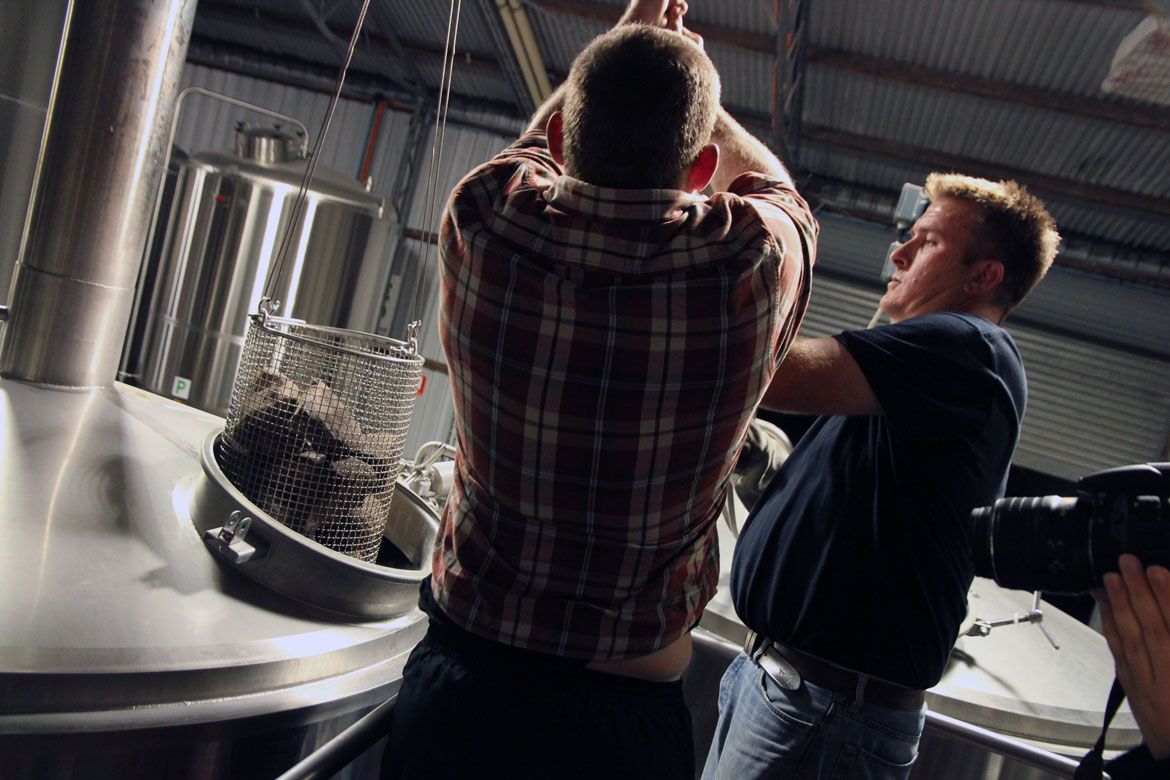
Back in May 2013, Good Beer Week featured a Festival Hub for the first time – The Terminus in Clifton Hill. As part of the organising committee, I'd arranged a tap lineup featuring a mixture of the best new breweries, big beers, collaborations, stone cold Aussie classics and the like. On the opening night, there were big IPAs, one of the country's earliest sour beers and various other eye-catching beers on tap.
At some point in the evening, I was chatting to Brian Strumke of American brewing company Stillwater Artisanal. We shared passions for the saison style and techno – he'd toured the world as a DJ, I'd played two house parties at uni so we were pretty much equals. We discussed many things that night, but one really stood out: of all the beers on tap, it was the Pacific Ale he was raving about. He'd never had anything like it and was blown away; here was a truly uniquely Australian beer.
"I’ve always tried to travel a lot overseas visiting breweries in the US and Europe and have always taken beer to share and swap with them," Brad says. "Brewers seem to admire it for its simplicity, distinctiveness, and drinkability.
"As for drinkers, we have been selling the beer in London since 2012, when we dropped a bit of beer into a few pubs over summer. Londoners love it as it’s a distinctively Australian beer that is perfect for those warm summer days and long, balmy evenings."
The beer became a useful tool for the creators of Galaxy too, with Hop Products Australia able to use Pacific Ale to show brewers outside Australia just what it could do; the experience of holding a fresh glass of the beer to your nose is pretty much akin to rubbing a Galaxy hop cone between your palms then inhaling deeply.
Arguably, its impact goes beyond kick-starting the Aussie love affair with light, tropical summer ales too.
"What we have seen emerge in recent years is this New England IPA style, which really is to a large extent built on the same framework as Pacific Ale," Brad says. "The hops might be different and the ABV might be higher and the haze might be a little more dense but it’s certainly evocative of the same structure."
As to what that structure is, Pacific Ale is a beer containing a large portion of wheat and rolled wheat, heavily dry hopped late in fermentation to capture the hop flavour but not the bitterness, and one that presents cloudy or hazy like it was drawn straight from the fermenter.
Brad adds: "We don’t know if someone in the US had seen what we were doing here and drew inspiration from it or they just came across the same thing in a parallel universe. The challenges they are having with NEIPAs in terms of managing freshness and packaging them are things we have had to overcome as well, and over recent years we have put a lot of science into how to manage the fermented beer in the brewery to ensure the beer quality through the distribution chain is maintained.
"Pacific Ale was created through artistry and creativity, but it's now the beneficiary of a lot of science around the interplay between awesome hops, great malt and energetic yeast. As the science gets more detailed and we continue to build our knowledge of what goes on in a beer like Pacific Ale we will see the beer just get better and better."
The Future?
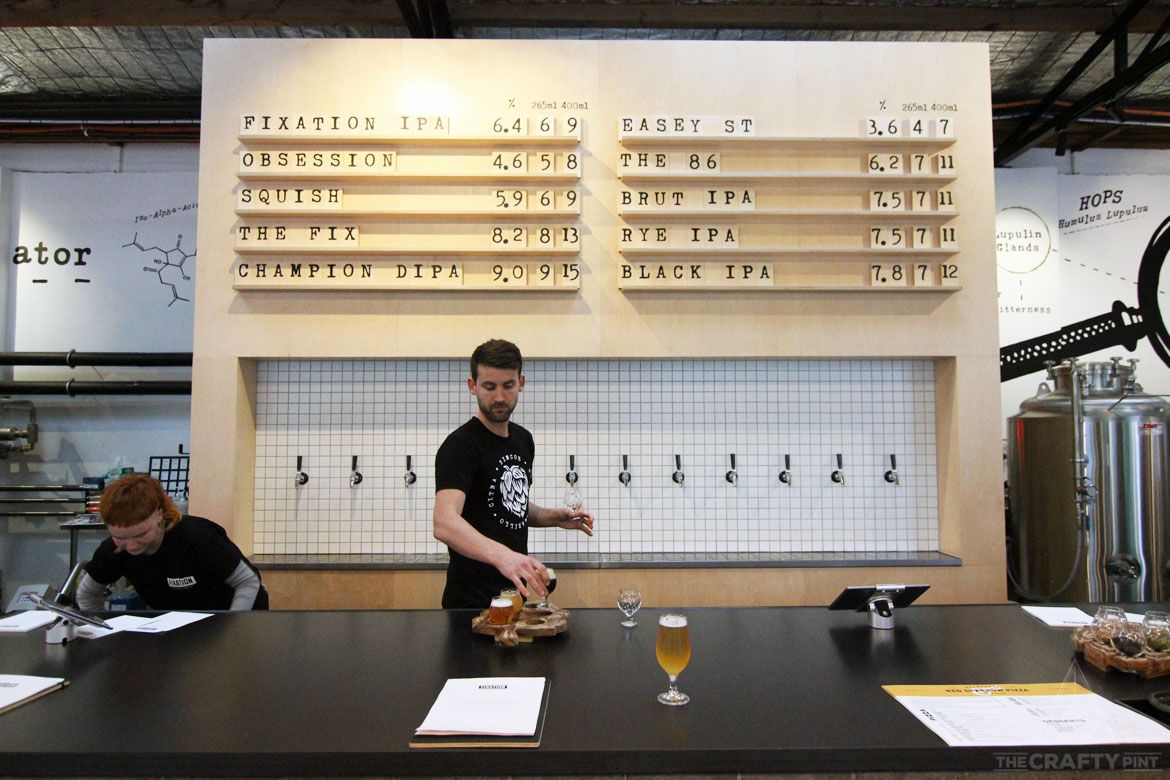
Designing a beer that, within ten years of being launched, is selling approximately ten million litres every year is no mean feat. At the same time, when it's 90 percent of your entire business, the words "eggs" and "basket" come to mind. So what if drinkers were to fall out of love with Pacific Ale?
"We have recently been able to build more production capacity, which has allowed us to broaden our Stone & Wood portfolio through letting the reins off some of the other beers that have had to play second fiddle to Pacific Ale, or new beers that the team are constantly developing in our pilot plant," Brad says. "So there’s some exciting things happening with the Stone & Wood business at the moment.
"Outside of Stone & Wood in the broader Fermentum business, we have been steadily building a portfolio of other businesses and brands such as Forest for the Trees, Fixation, Granite Belt Cider Co and, of course, the Square Keg distribution business.
"All of these things are about proving a broader base to our overall business and reducing the reliance on Pacific Ale. But we have to do that in a way where we keep the main thing the main thing – so Pacific Ale is still front and centre for us."
After finding a canning line that met their standards and requirements, they recently gave many drinkers what they wanted – Pacific Ale in cans – as the next stage in that beer's evolution. Meanwhile, highly regarded seasonal releases like this year's Sticky Nectar Mango IPA or the tenth anniversary barrel-aged imperial stout SWX – not to mention regular success in major awards competitions – suggest neither innovation nor standards are being hampered by any temptation to rest on laurels.
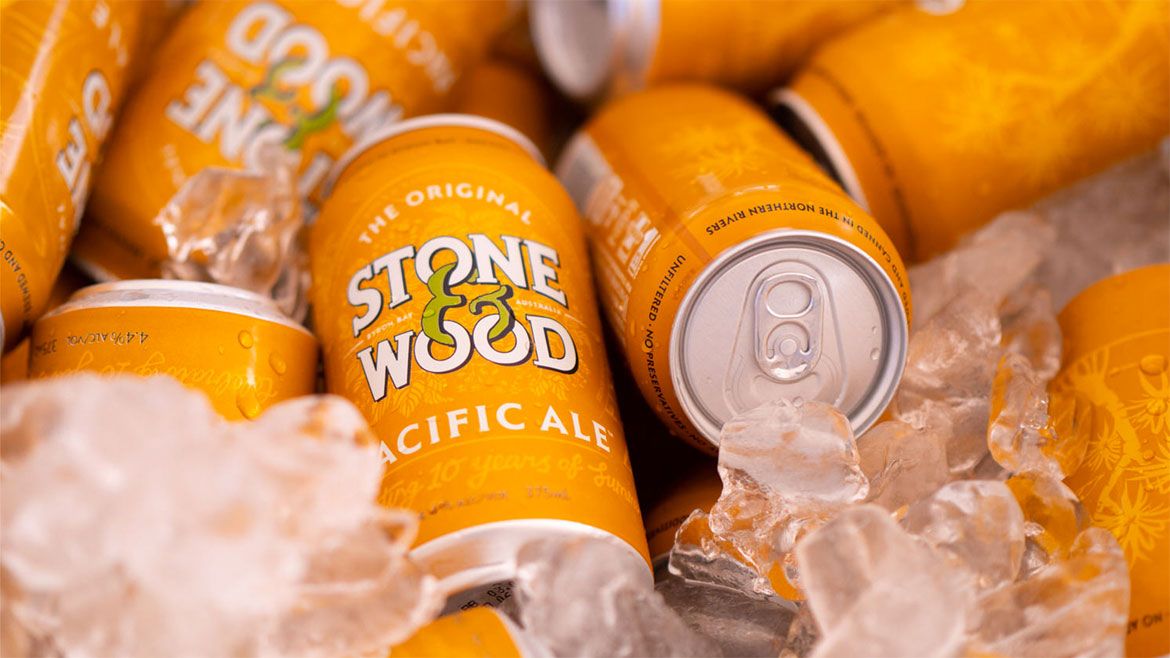
But what about the wider beer industry in Australia? Where does its future lie? What does their combined wealth of experience tell them to expect in this wild time for beer?
"There are still opportunities but there's still challenges," Jamie says. "The underlying drivers are still there and won't go away. You've only got to look at the big brewers' results and they keep getting knocked around by the shift. But [breweries] have to get through the noise to get to the drinker.
"Even if every tap in the country was free [from tap contracts], the amount of breweries fighting for them means not everyone is going to get on, which is why we are seeing people do their own thing. We see the rise of 'own premise' as another channel to market now."
He also sees a shake up on the way, one where the good and bad operators will become more apparent and in which the huge recent increase in capacity, such as at Tribe Breweries' new facility in Goulburn or Brick Lane in Melbourne's east, will create its own ripples.
"In the past ten years, there have been people who have been successful despite themselves," he says. "But without good beer and a good brand and good distribution it's going to get tough. It will get worse before it gets better."
Jamie adds: "Now there's so much capacity coming – some big facilities built on a contract capacity. If things are being underutilised then that's when people get desperate."
As for existing businesses with ambitions to become another Stone & Wood, he says: "I think there's still opportunities for strong regional and local brands with good product.
"You can get to the two million [litres per annum] mark. The challenge is getting beyond that. Not many have gone through that size and survived in the last hundred years. There's some sort of glass ceiling where if you don't have everything bang on, if your brand isn’t scalable and approachable to the market in the right way, then you are just selling more beer to the niche."
And to anyone building a business with the intention of selling, something Stone & Wood has repeatedly affirmed isn't part of their plans, he says: "If you look globally at the brands [the big beer companies have] acquired, there's not many long-term successes. Even Goose Island is going backwards in the US. If [the acquired brands] are not growing and retaining value then they’ll lose interest in them.
"They'll be watching these acquisitions. If it's not making a lot of sense they won't keep buying. They'll cherry pick. Just because you're up for sale doesn't mean they're going to buy you."
The Legacy
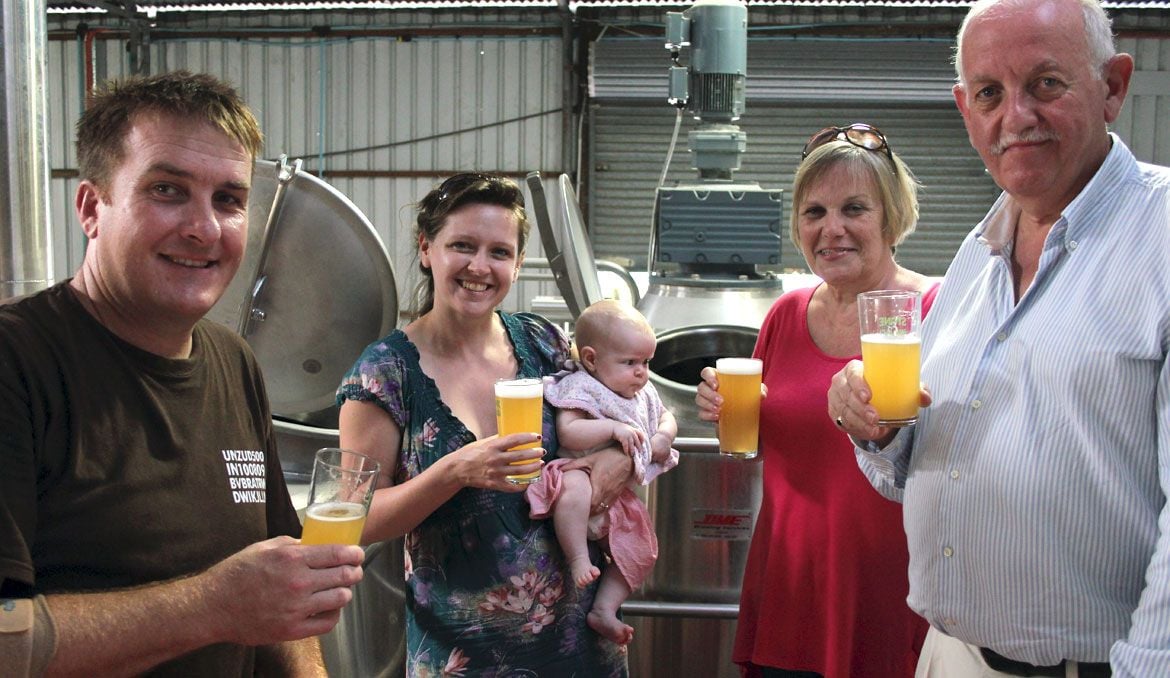
When you've been around the beer scene for close to a decade as it has exploded into life like never before, you're bound to amass a good collection of stories. But, when I look back on those years, it's amazing how many can be related to a handful of venues, people or breweries. Of the last of these, there's a few that have been integral to the growth of The Crafty Pint, be it through events, shared experiences, mentorship or simply growing up together. And Stone & Wood is very much one of those.
Every single member of the Crafty family who has visited Australia has been to the original brewery in Byron – my parents drinking Pacific Ale from the tanks with the founders back in 2011, my brother returning to the UK and getting the old man with a pipe from an early Mash Collective release tattooed on his forearm. Eight years on from his first experience of Pacific Ale – "It tastes like a bloody fruit salad!" – my dad still sends updates whenever he comes across a beer in the UK that conjures memories of that pint at The Terminus.
Over the years, several members of the Crafty team have travelled to Byron Bay for the annual Stone Brew day; a writer said it was the one thing above all he'd wanted to do in the beer world; while discussing this article, another described it as "one of the best experiences I have had".
And what is the purpose of telling you this? I guess it's because, for all that the Pacific Ale tale is one of phenomenal financial success, the Stone & Wood story that surrounds it wouldn't be what it is without the personality that infuses the wider operation. Sure, there's sharp business acumen at the heart of what they do, but the embrace of community, the desire to be a good business that does good, isn't just marketing spin. The laid-back tropical vibe of the beers in many ways encapsulates what Stone & Wood is about; somehow, everyone we've ever encountered that works for the business is lovely. Often ridiculously so, and that can't be an accident.
Brad and Jamie, in particular, have been generous with their time over the years, whether acting as a sounding board or helping this relative newcomer to the country (and beer) put what's happening today in better context in terms of beer's history over the past few decades. I'm certain there are many others for whom Stone & Wood and their beers will have some form of personal legacy.
As for the founders' legacy, Ross is quick to scotch such talk; "People say, 'Do you ever stand back and look at what you've built?'," he says. "Who does that?"
Not that there isn't satisfaction in how far they've come after a decade.
"I’m most proud about the simple fact that the three of us left great jobs and backed each other that we could get to where we are today," Brad says. "In terms of beers, I’d have to say that the Pacific Ale makes me happy everyday. It’s such a great beer to brew and enjoy."
For Jamie, there's more to Pacific than that too.
"I think our legacy is around creating a distinctive Australian beer," he says. "The beer we have created is Australian in character. It's right for the climate. We put it up there with a German wheat beer or a Belgian wit.
"It's Foster's with some authenticity around it. It's not just the branding that's Australian."
You can read other entries in The Story Of: series here.




